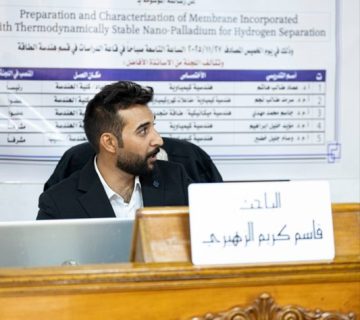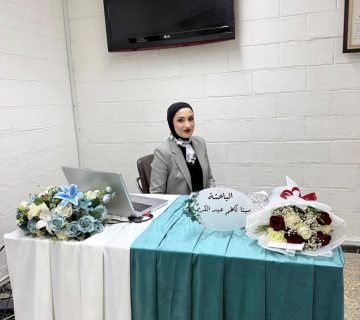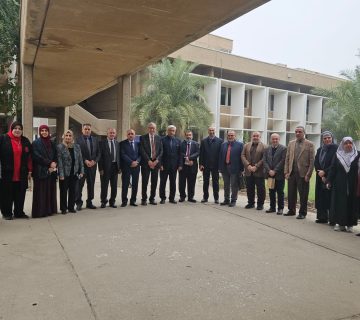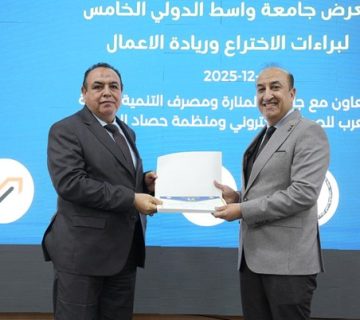It was conducted on Sunday, 22/10/2023, in Dr. Munther Al-Droubi hall the discussion of the master’s thesis of the student Sarah Oday Adnan, which is tagged:
” Investigation of Transient Thermal Stratification for Solar Water Tank with and without Withdrawal Loads”.
The discussion committee consisted of names listed below:
1- Prof. Dr. Ahmed Fakhri Khudheyer (Chairman)
2- Asst Prof. Dr. Nibal Fadhil Farman (Member)
3- Lecture. Dr. Wail Sami Wadee (Member)
4- Prof. Dr. Karima Ismael Amori (Supervisor)
The aim of the thesis was to research presents an experimental study to investigate the performance of an innovative modified residential storage tank. Both newly introduced designs are cubic in shape and made from galvanized iron. The first design consists of three vertical black-painted and glazed surfaces, namely the east, south, and west. The second model consists of two vertical black-painted and glazed surfaces, which are the south-east and south-west surfaces. The first design have only one vertical insulated surface which is the north surface, while the second design have two vertical insulated surfaces which are the northwest and the north east. The horizontal tops and bottoms for both designs are insulated. Both designs were placed with different orientations related to the south and were tested side by side with the conventional home tank. Tests were conducted in Baghdad, Iraq (Latitude 33.3°, Longitude 44.3°).
Results showed that, during summer, the daily average temperatures observed in the conventional home tank are comparatively higher than those recorded in the new models by 15oC, as the latter serve as effective insulators and can provide the user with comfortable temperature. In winter, the innovative models experienced a noteworthy temperature increase which is higher than the conventional home tank by 6oC. The summer thermal efficiencies of the first and second models were recorded as 10.93% and 15.62% with a maximum solar radiation intensity of 950 W/m2, respectively. In contrast, during the winter season, the first model exhibited a thermal efficiency of 15.09% with a maximum solar radiation intensity of 450 W/m2, whereas the second model demonstrated a higher thermal efficiency of 19.46%.
After the scientific discussion by the members of the discussion committee, the researcher received a rating of (very good








